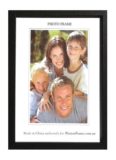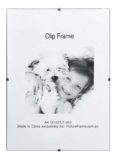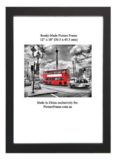![]() Why a post on cleaning paper art, you might well ask. Well now, we can all relate to, and understand, the desirability, if not the necessity, of thorough personal ablution prior
Why a post on cleaning paper art, you might well ask. Well now, we can all relate to, and understand, the desirability, if not the necessity, of thorough personal ablution prior to attending important, social events. Let us , for instance, for a moment imagine a garbologist ( in the context of the Australian idiom ) going to a wedding, after a long, hard, hot days’ work. We would also further imagine that , he (or she), would doubtlessly want to bathe, or shower away any, lingering, residual, occupational and personal odours before attending. Much the same norm or social convention is followed when undergoing a physical examination or going out to a date. The underlying motive for these ... behaviours is our innate desire for both social bonding, and our expectations of rewarding and positive outcomes for our actions, efforts and interactions. With these examples in mind, let us turn our attention towards often old, dusty, soiled, dirty and often grimy art, works and documents on paper. Such works are occasionally brought in to picture framers for custom picture framing by Customers.
to attending important, social events. Let us , for instance, for a moment imagine a garbologist ( in the context of the Australian idiom ) going to a wedding, after a long, hard, hot days’ work. We would also further imagine that , he (or she), would doubtlessly want to bathe, or shower away any, lingering, residual, occupational and personal odours before attending. Much the same norm or social convention is followed when undergoing a physical examination or going out to a date. The underlying motive for these ... behaviours is our innate desire for both social bonding, and our expectations of rewarding and positive outcomes for our actions, efforts and interactions. With these examples in mind, let us turn our attention towards often old, dusty, soiled, dirty and often grimy art, works and documents on paper. Such works are occasionally brought in to picture framers for custom picture framing by Customers.
Often these are old, rolled up maps, dog-eared documents or creased drawings. And just as often these art items have been kept in dirty containers in grimy environments. Mechanics’ garages and butchers’ shops come to mind.
Oil, petrol, glue, flour, paint, tapes, cement, mortar, coffee, tea, wine, beer, milk, chocolate, cake, water, bread, tomatoes, blood, food, organic matter, dirt, soot, insect, bird and other animal droppings are just some of the most common foreign elements that readily come to mind in a quick list of materials that often stick, transfer, adhere to and soil art.
Naturally, this list is by no mean complete or exhaustive. In our own store we are sometime presented with an art item that is, or has been, soiled when in contact with some or any of the preceding materials. In many cases, Customers are emotionally attached to the items which are sentimentally valuable to them.
Invariably they also want to preserve the art they brought in framing, and that’s the core purpose of archival and preservation picture framing methods and practices. However , but more often than not, the art needs whole or partial cleaning prior to this being done.
Any cleaning of paper art, removal of dirt, debris and other contaminants ameliorates the art’s aesthetics, tends to make the image sharper, more legible and minimizes, if not obviates, further degradation and deterioration.
Before discussing how paper art maybe cleaned, the even more important topic of when not to try and clean paper art needs addressing. To begin with, paper art is often thin, ragged, torn, holed, creased, eared, brittle and fragile. It follows that any handling and mechanical application needs to be done with care and delicacy.
And if the art is particularly valuable the picture framer, or the person undertaking the cleaning, should consider if the work to be done is insured or insurable. At the very least, a Liability Waiver or Responsibility Disclaimer should be presented to the Customer for his or her consideration and execution.
That said, while most paper-borne art is suitable for cleaning, some is not. Art rendered and drawn with loose and friable media such as pastels, charcoals and many soft, powdered graphite pencils can be unstable and very delicate.
These works require a preliminary, professional assessment before to evaluate if cleaning is desirable, possible or even feasible. These evaluations are best undertaken by professional conservators or art restorers with both qualifications with experience in this field.
Should the art to be cleaned pass of these caveats, preconditions and qualifications then a gentle, slow cleaning may be attempted. If the piece ought to be to be merely dusted, a soft duster or soft brush while held upside-down, or vertically, may suffice, so that any dislodged dust won’t fall back on it.
Hard, harsh or vigorous, mechanical rubbing ought to be proceeded with extreme caution since the harder and longer the rubbing and concomitant mechanical friction, the higher the probability of tearing or damaging the art. Once a paper document is holed or torn, this cannot be undone or even remedied.
Bearing in mind all the preceding and aforesaid forewarnings, we can suggested the cleaning media that have stood us in good stead over the years. These are the Document Cleaning Powder and Pad shown below and available at most reputable or well known art stores.
We lightly twist and pass the Pad over the art needing cleaning item, lightly rubbing it, if you will. The white, grit-fee powder is fine granulated rubber which, when gently rubbed over the dirty areas, absorbs dust and dirt. Any residue is then simply dusted or brushed off. An odd, good thing about the cleaning Pad is that it never needs washing, making us wonder, where does all the dirt go Lastly, and at least for us, it does not smear and any removed dirt will not transfer.
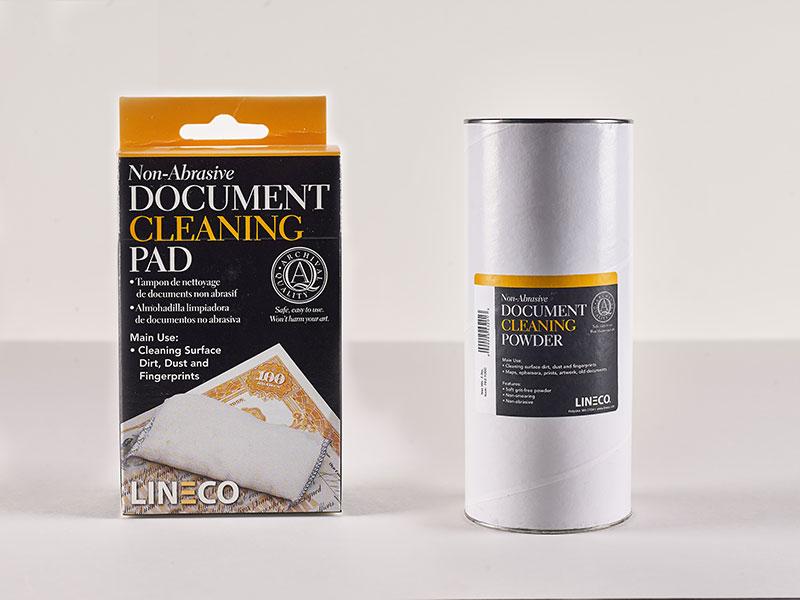
We always found this type of cleaning paper art accessory quite useful because as we as removing soot, grime and other dirt it also removes oily fingerprints. If the art being cleaned has hard surface, foreign matter deposits, these may come off by lifting them off with a blade or scalpel , but if in doubt, and worried about causing a hole, it best to leave these alone.
If possible it is advisable to test all debris removal and cleaning efforts in a hidden or non-prominent place. For instance if the document is to have a window mat over it, testing under the covered sections, is good practice.
One word of caution though, in our experience energetic over cleaning of one area only, and not cleaning the other areas, tends to leave a visible, light patch. This unintended result can make the rest of the paper art seem even dirtier, so, clean gently slowly, carefully, and pausing form time to time to see the cleaned section looks in comparison to the rest of the document.
On occasions, we’ve had to run-clean entire map sheets because the cleaned spots stood out so much. Lastly, during the picture framing consultation the picture framer would have appraised the Customer of the need at the very least, of framing the art being cleaned, with acid free materials.
In plain language, acid-free framing means that everything touching the art ( document, paper, drawing, watercolour and what have you ) will not be acidic, but the opposite, acid-free.
Most Customers don’t know this, but the bulk of picture framing is commercial picture framing where highly acidic materials such as MDF, strawboard and other raw pulp boards. These materials all contain lignin which, when left for even a brief period of time, starts to migrate and “burn” the art these may be in contact with. An example of badly acid burned art is shown below:
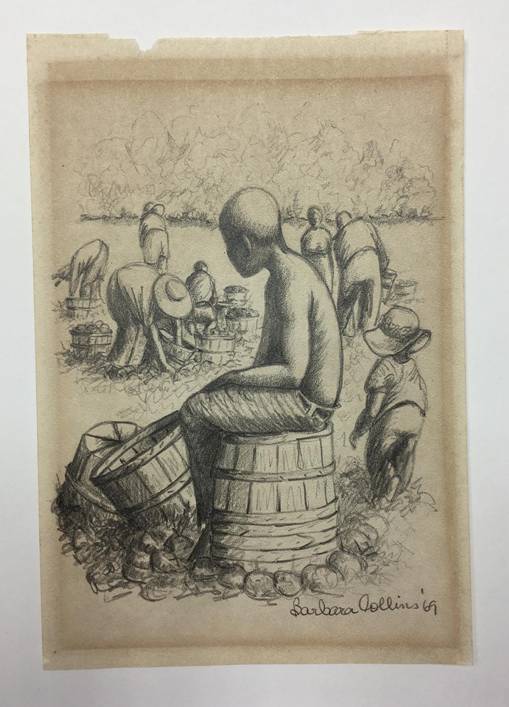
It is almost certain that the art above had both an acidic window mat on top, and backing at the bottom, to sustain the extent of lignin burn. An easy method to prevent such graphic damage is a simple change in the materials used.
For instance, instead of an acidic MDF backing, acid-free foamboard has to be used and instead of acidic window-mat, and acid free one needs to be fitted. And while these clean materials are somewhat more expensive, for the few dollars difference involved in an average size picture frame of 16”x20”, it’s always the smarter thing to do to go acid-free.
For the specification of our acid-free picture framing visit Picture Framing Standards . It is worth pointing out, perhaps to artists struggling to meet their picture framing budgets for upcoming art exhibitions, that Ready-Made poster frames offer good value.
For instance, this A2 to A3 Ready-Made Matted Frame for around $33 is excellent value against a conservation framing version at around 10 times this price. The only change needed to make this A2 to A3 Ready-Made Frame is and acid-free backing, cut from either a matboard or foamboard sheet. In the same vein this A1 to A2 Ready-Matted Poster frame and subject to a slight modification is marvellous value for money when compared to much pricier, archival or conservation picture framing.
To summarize, knowledge of good, bad and indifferent materials and their advantages and disadvantages is much better understood today than say, 50, 40, 30 or even 20 years ago. While the 1980’s picture framer may well have had an excuse for not knowing that he or she was framing good art badly, the modern picture framer has no such excuse.
At the very least, all picture framers should offer their Customers the acid-free framing service as well as the standard picture framing service. For anything of a higher standard, more exacting, or more elaborate, picture framing specialists are easily found on Google. Thank you for reading this post "On Cleaning Paper Art Prior to Picture Framing".





